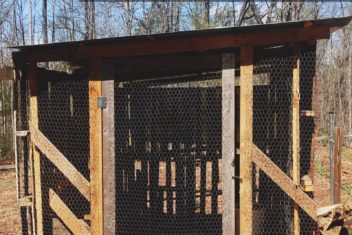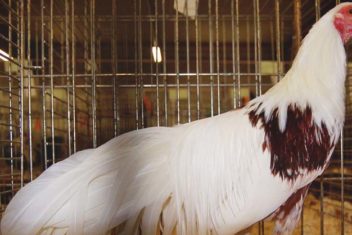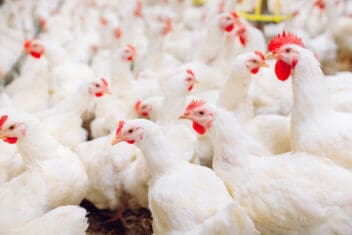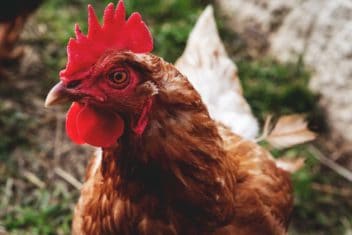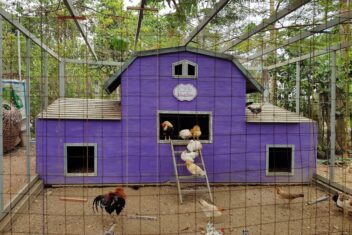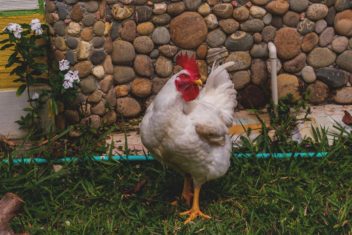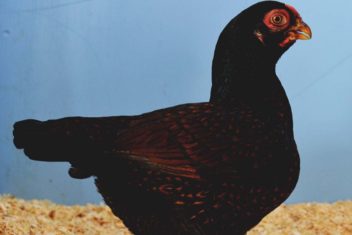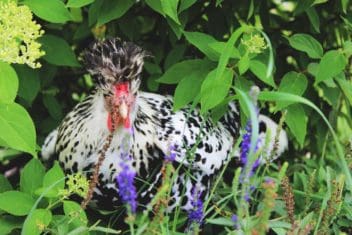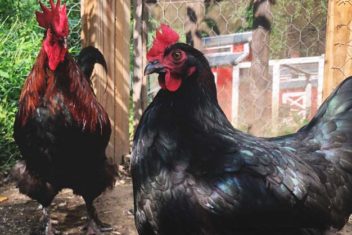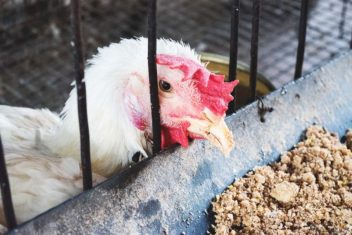The main goal of any owner of chickens is to keep them (and yourself) healthy. Sometimes, you can’t avoid a virus or bacteria infecting your flock, but other times, many of these pathogens are avoidable through good hygiene.
Avian salmonellosis is one such example. Although there are instances of wild birds spreading this disease to chickens, it can also be traced back to bad conditions of the coop, run, or surrounding area.
If avian salmonellosis concerns you, let’s get going on this critical subject.
What is Avian Salmonellosis?
Avian salmonellosis is a broad term to describe a group of bacterial diseases coming from the Salmonella genus. To keep it simple, a genus is an umbrella over a group of related species. In this case, the species are related bacteria.
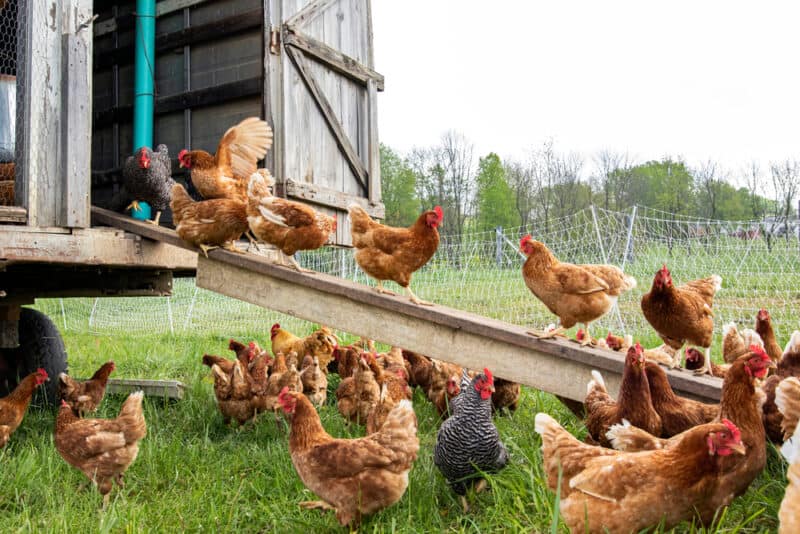
Salmonella typhimurium is the most common salmonellosis infection, but there are many possibilities, given the amount of bacteria in this genus.
S. enteritidis is often found on the homestead as well. Other Salmonella are S. hadar, S. serotype Livingstone, and S. enterica.
S. serovar Pullorum, and S. serovar Gallinarum are specially adapted to poultry and will take any opportunity to infect a flock.
Salmonella affects the intestinal tract and is considered a fecal-oral infection. The bacteria live in the intestine and are shed when the bird poops. The bacteria can also be in feathers, skin cells, and floating in the air.
Symptoms of Salmonellosis
Although you should always be weary of this bacteria, be especially observant of your chickens in spring and winter. The incidences of this infection are usually higher at this time.
Sometimes, you need to have an analysis of a stool sample or the eggs to determine if the chicken has salmonella, as it can manifest in ways similar to many other avian infections. These include:
- Much lower egg production (or none at all)
- Wattles and combs are pale and soft or could be purple to black.
- Watery diarrhea or deep yellow or green stools.
- Weak or uncoordinated movement
- Increase in water consumption
- Shivering when it isn’t cold
- Depression and listlessness
Some adult chickens show no symptoms but are carriers of the bacteria and will infect other birds in the flock who will infect others. They can also make you sick if you touch them or the eggs.
With S. serovar Pullorum and S. serovar Gallinarum, you may also see chicks failing to hatch from eggs due to the bacteria being passed from the mother to the chick.
In the adults, you should also look for ruffled feathers and pale combs or wattles. Chickens infected by these two types of salmonella will become carriers of the disease and infect other chickens with their stool easily.
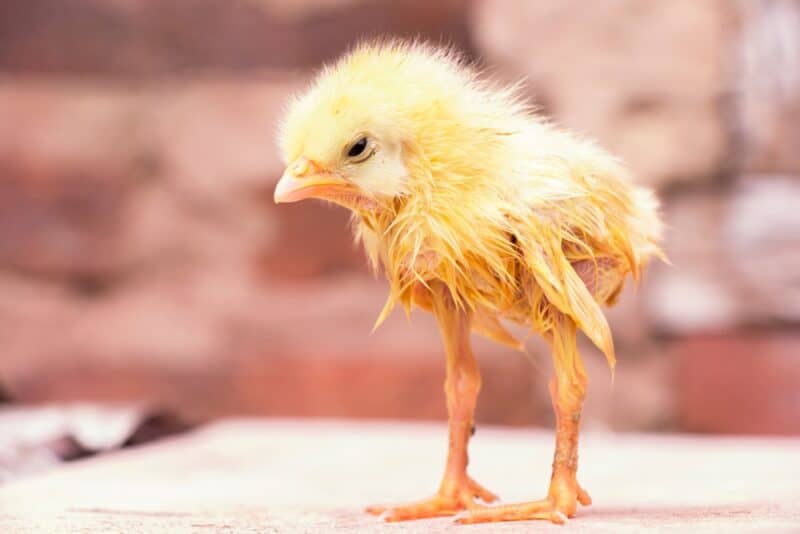
Baby chicks are usually hit hard by salmonella. It will likely be fatal if they catch one within the first three weeks of life. The signs are specific in chicks, unlike in adult chickens.
They will seek out and try to get close to heat sources. Their appetites will lessen, and as a result, lose weight quickly.
Their vent may be covered in a white diarrhea-type discharge. At this point, death is imminent and will happen quickly.
If you are concerned about your flock and think they may be suffering from a salmonella-like bacteria, you should get blood or stool samples taken by a veterinarian.
The effects of salmonellosis depend on the type of bacteria and the health and age of the chicken. Don’t think this isn’t serious because there are few (or no) symptoms. It is.
How to Avoid Salmonellosis
If you take one thing from this article, it should be hygiene is key. Many people perceive chickens as very robust, but any animal kept within a certain space where they eat and defecate will be susceptible to infections.
Introducing New Chicks
The most efficient way to introduce new chickens to your flock is to incubate eggs in an incubator. You may want to let the chickens do this for you, but it is a hit-and-miss procedure if you choose to do it that way.
- Buy chicks from a reputable source. The easiest way to introduce salmonellosis to your flock is by importing it from less hygienic sources.
- Ensure eggs are salmonella-free. Many egg suppliers have processes that reduce the risk considerably, so ask about their methods.
- If you get eggs in and use your own incubator, ensure it is spotlessly clean and thoroughly sanitized from the last batch.
- If you bring in new chicks rather than eggs, isolate them until you are 100 percent sure they are not infected with salmonella (or any other bacteria or disease). This usually takes up to two weeks.
Keeping the Coop and Run Clean
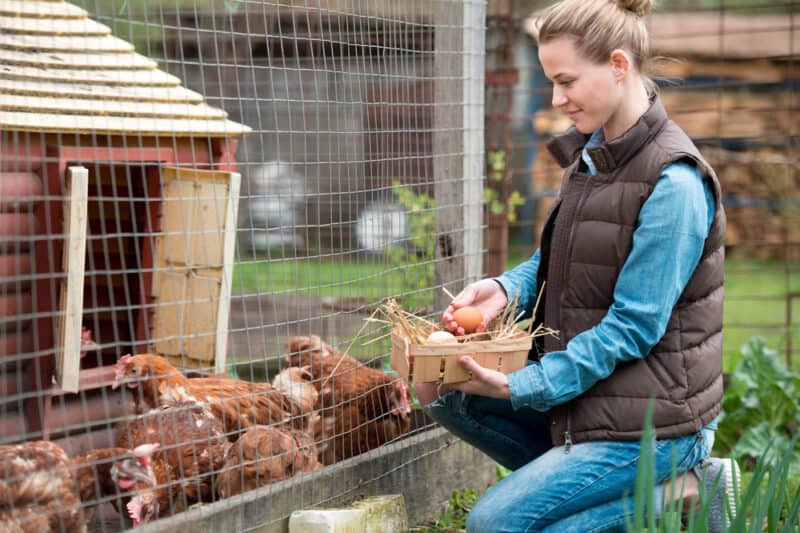
Keep nesting boxes clean. This will keep eggs free as much as possible from poop and mud from the run, which is likely covered in poop.
Fresh bedding usually results in eggs that don’t need any cleaning. Use diatomaceous earth or similar to keep ticks and other bugs at bay, and use a quality disinfectant when cleaning the boxes.
Deep-clean the coop and nesting boxes a minimum of two times a year. Use a good quality disinfectant or cleaner designed explicitly for chicken coops.
Rodents are a source of this bacteria, and their fecal matter in the coop is problematic. Make sure you have a rodent plan to catch or prevent their access to the coop as best as possible.
Keep only necessary equipment in the coop and run area. If it doesn’t need to be kept there, get it out and store it elsewhere.
Keep wild birds as far away from your chicken flock as possible. This is not always possible, but do the best you can.
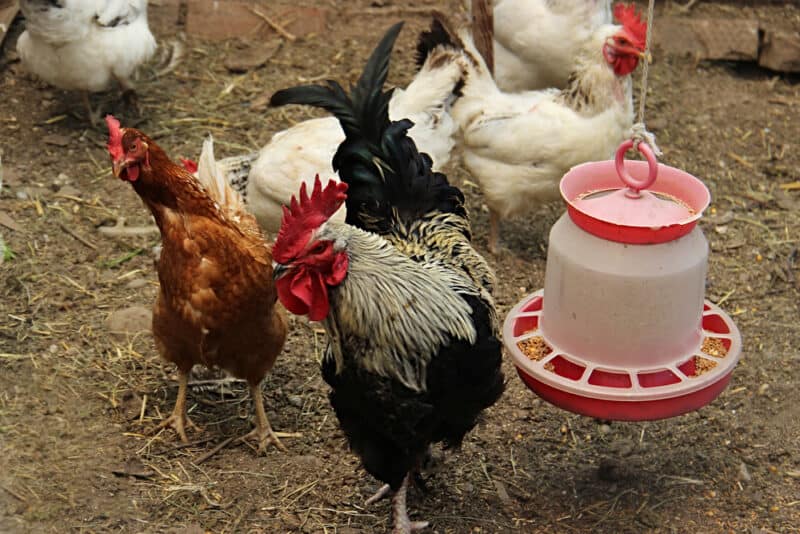
Often, the way you feed plays into this issue. If you spread feed all over the ground, you will definitely get wild birds coming into the run.
Use feeders that chickens have to make an effort to get into. If you have an enclosed run, you may still have issues of fecal matter falling into the run if wild birds sit above your chickens.
Keep Your Chickens Healthy
Ensure your chickens are healthy by keeping them hydrated with clean water, feed them with quality food, and if you treat them, ensure it is food that will boost their immune systems. Provide plenty of fresh greens.
Keep water free of algae and, more importantly, chicken poop.
7 Additional Steps to Avoiding Salmonellosis in Your Chicken Flock
- Avoid open feeders. There are treadle feeders available that open when a chicken steps on it and close when it walks away. A free meal is too tempting for wild birds. This keeps small birds away.
- Don’t house chickens by a pond. Migrating wild birds are often implicated in the spreading of avian diseases, and Salmonellosis is no different. One of the most common vectors of this disease is migrating birds in large numbers.
- Keep wild food feeders away from the coop. Apart from the wild birds these attract, they also lure in mice and rats. Their droppings are full of dangerous microorganisms.
- Don’t allow cats and dogs in the run or where chickens free range. This is because both cats and dogs do their business wherever they feel like, and you don’t know if they have already eaten a dead bird that is infected, or even walked through their poop.
- Keep ducks and chickens separate. Ducks need bodies of water, and this is a lure for wild birds to come and join them, even if just migrating for a while.
- Make sure the coop is ventilated. Fresh, gently flowing air is important. Bacteria like salmonellosis can be breathed in on particles in the air.
The last tip is about the chickens’ water. I’ve already covered it, but it’s worth repeating. Provide them with fresh, clean water every day. A good habit to get into is to clean and refill the water container before you let them out each day.
What To Do in a Salmonellosis Outbreak
If there is a reported outbreak in your area, remove water containers and feeders from any area where wild birds may be attracted. If you suspect you have an outbreak in your flock but have no symptoms, you can send the eggs in for testing.
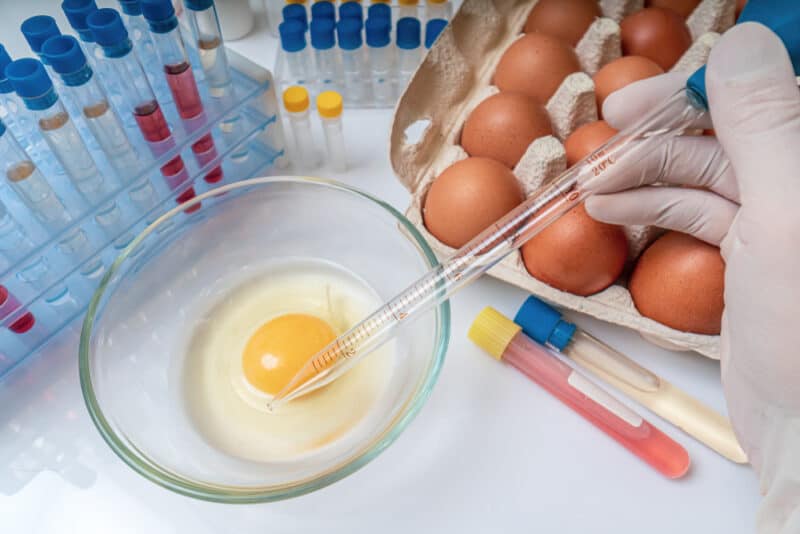
If you suspect your flock has a salmonellosis outbreak, take these steps:
- Contact a vet if you can for professional advice. Antibiotics can help some birds, though this is not always the case.
- Be aware of any reporting requirements in your area. Some areas require that you inform them of any outbreaks for public safety.
- Isolate sick birds if you have identified the disease early.
- Clean the run and coop thoroughly. Protect yourself with masks, gloves, and appropriate clothing while working there. Chicken coop dust can be harmful, not just because of salmonellosis.
You should also take steps to keep any eggs clean. Salmonella is carried in the intestinal tract and if the feces touch the eggs, it can be transferred to you when you eat the eggs.
Keep laying areas clean and poop free. If any feces get on the eggs, rub it off with a towel or sandpaper. Don’t wash the egg. That opens the pores and allows any salmonella on the outside to enter the inside.
Wash your hands after handling eggs or the chickens.

